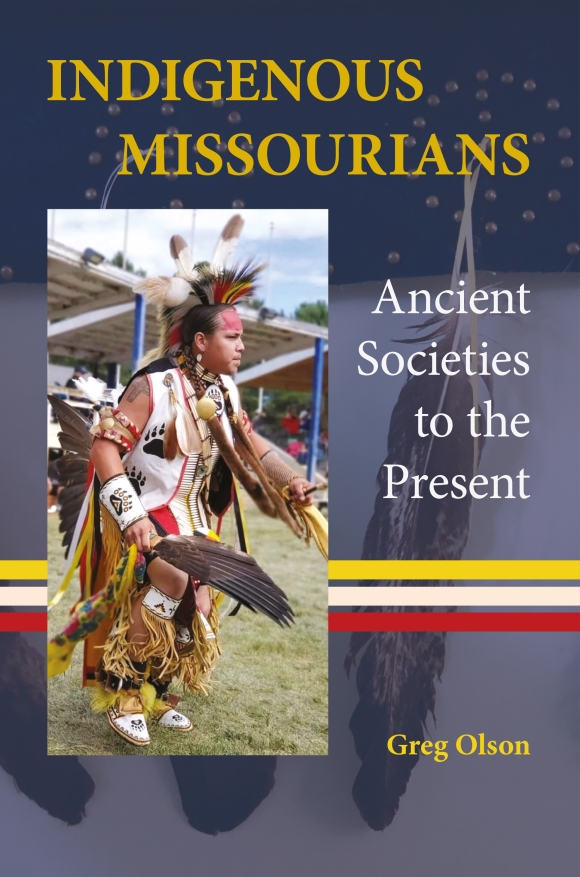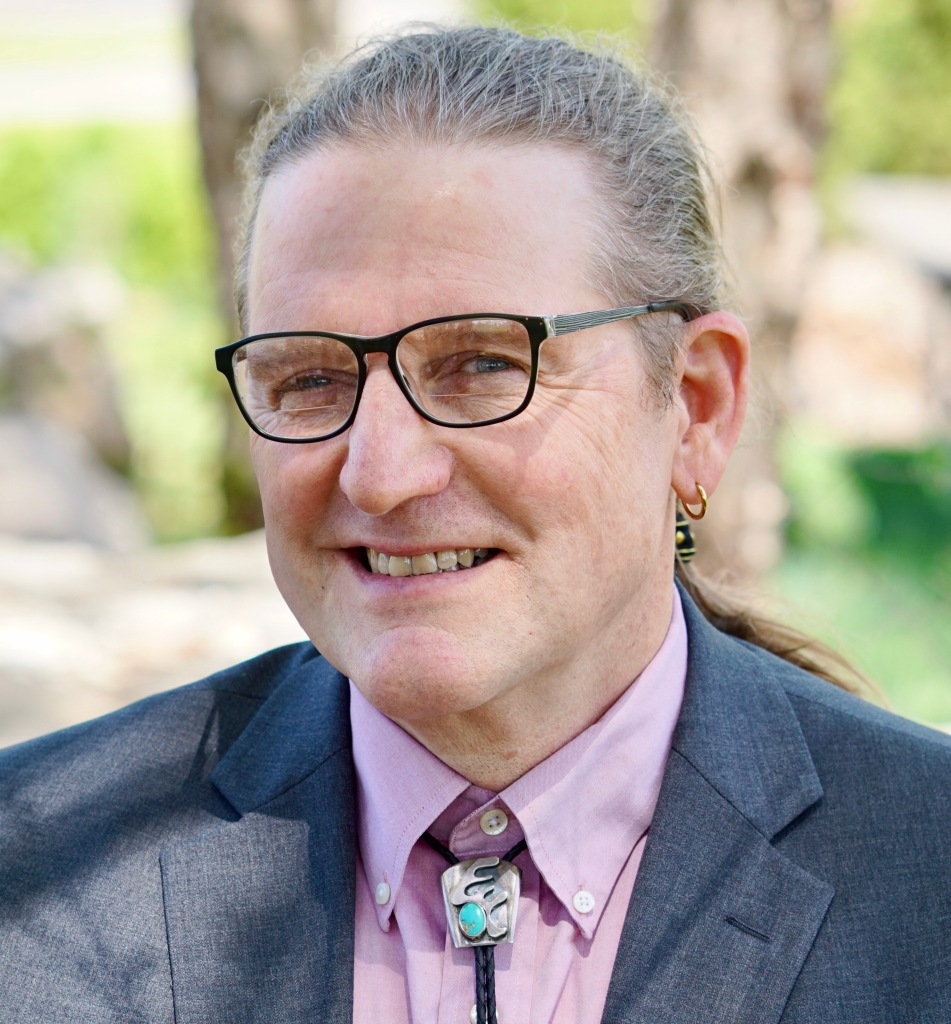Greg Olson reappears on the publishing scene with his new book, Indigenous Missourians: Ancient Societies to the Present. This week’s author blog features a fascinating excerpt of the book from the preface.
Greg Olson served as the Curator of Exhibits and Special Projects at the Missouri State Archives from 2000–2018 and is the author of six books, including: The Ioway in Missouri; Voodoo Priests, Noble Savages, and Ozark Gypsies: The Life of Folklorist Mary Alicia Owen; and Ioway Life: Reservation and Reform, 1837–1860.
In May 1962, forty-six-year-old Elinor Fields was heavily involved in many aspects of her community. A member of the Pawnee Nation, Fields had been a sergeant in the US Army during the Second World War. After returning home to Pawnee, Oklahoma, she had become a member of the Indian Women’s Pocahontas Club, an all-Indigenous women’s organization formed in 1899, for the purpose of caring for “our culture, our heritage, and our communities.” By 1950, Fields was contributing to the club’s weekly “Indian News” column in the Pawnee Chief. A decade later, the column would appear under her byline. “Indian News” was the kind of small-town newspaper feature rarely seen today. It covered the social events and the comings and goings of Pawnee community members. In putting each week’s column together, Fields made it her business to know about local weddings, funerals, graduations, birthdays, anniversaries, and who had visited whom. As an active member in her tribal community, it is little wonder that “El,” as she was known, was one of about a dozen Pawnees called upon to make the three-hour car trip to Neosho, Missouri, on Saturday, May 12, to represent the nation in an “Indian program.”
When the Pawnee delegation reached Neosho, they found the streets of the town of seventy-five hundred people filled with a crowd of eight thousand. The crowd had gathered that day to pay homage to seventy-three-year-old Thomas Hart Benton who had returned to Neosho to bask in a “homecoming” celebration held in his honor. Benton, who had left his hometown in 1912 to eventually become a world-renowned artist, was celebrated in Neosho by the likes of former President Harry Truman and the artist Charles Banks Wilson. The activities included the unveiling of a new portrait Wilson had completed of Benton, performances by folksingers, a press conference, and a gala dinner for five hundred guests.
The Pawnees had been asked to participate in the festivities as a way of commemorating the many trips that young Tom Benton had made into the Indian Territory, the eastern border of which was just fourteen miles away, to hunt and fish. Their performance might also have reminded Benton of his childhood when Indigenous people were a common sight in the streets of Neosho. As their exhibition ended, El Fields invited Benton to join them. What followed was described as an impromptu “Pawnee two-step” with Benton and Fields leading a line of dancers around a circle in the Newton County Courthouse square.
It is telling to see the beaming Benton navigate his way across the square as he held hands with El Fields. The Pawnee two-step, which differs from the Texas two-step, is a staple of powwows across the country. It is one of the few powwow dances in which couples step together while holding hands. It also provides women with a rare opportunity to extend invitations to the dance partner of their choice. In fact, men who refuse a dance invitation run the risk of having to give the asker a small gift. In some ways, the role of women in the two-step is in line with traditional Pawnee culture in which women held much of the power and made many of the important decisions. Though it was Fields who had extended the dance invitation, asking Benton to participate in an exhibition of her culture, Benton appears to have quickly assumed control. The artist, who during his long career had rendered dozens of Indigenous people—not always flatteringly—in his regionalist paintings and murals, turned the women’s two-step into a spectacle that he controlled. The dancers were there, after all, to commemorate his life. So, it seemed natural for Benton, the guest of honor, center of attention, and a white male, to lead the way.

The spectacle of Benton leading Fields and the Pawnees in the two-step, photos of which were printed in newspapers around the country, can be seen as exemplary of Missouri’s general attitude toward Indigenous people. Originally planned by Thomas Jefferson as a place in which displaced Natives from east of the Mississippi River could be resettled—at least temporarily—to live without white interference, the state had removed all Indigenous nations from its borders by 1837. Two years later, Missouri law required any Native person who entered the state to have written permission from a government Indian agent in order to do so. From that time on, the people of Missouri considered themselves to live in a state in which Indians, at least the “real” buffalo robe-wearing, face-painting, arrow-shooting Indians of their imagination, no longer existed. This perceived absence of Indigenous people is particularly noticeable in the state’s history. Natives have only appeared in the annals of Missouri’s past when they presented a significant challenge or obstacle to settler colonialists’ hunger for land and natural resources. Once many were successfully deported to Kansas, Nebraska, and the Indian Territory in the 1830s, and no longer signified a threat to the state’s white settlement, Natives completely disappeared from Missouri’s story. This erasure of Indigenous people from the state’s boundaries and the story of its past has had long-lasting consequences. The presence, experiences, and rights of the Indigenous people who remained in Missouri over the past one hundred seventy years has been ignored and forgotten. For the most part, non-Natives now have no concept of, or connection to, their Indigenous neighbors, nor do they comprehend the long process of colonialism that has defined the history of Indigenous people. As a direct result, we live in a state where a large percentage of the general population is genuinely mystified as to why Native people object when fans of the Kansas City Chiefs enact the “Tomahawk Chop” in Arrowhead Stadium. As the Cree-Métis archaeologist Paulette F. C. Steeves recently has observed, “The cleaving of links between contemporary Indigenous populations and ancient homelands and links between ancient and contemporary people denies Indigenous identities and rights and fuels discrimination and social and political disparities.” No, Missouri has never danced well with Indigenous people, and on those rare occasions when we do, non-Natives insist on taking the lead.
Indigenous Missourians: Ancient Societies to the Present
by Greg Olson
Cloth | $40.00 | 448 pp. | 16 illus., 12 maps



